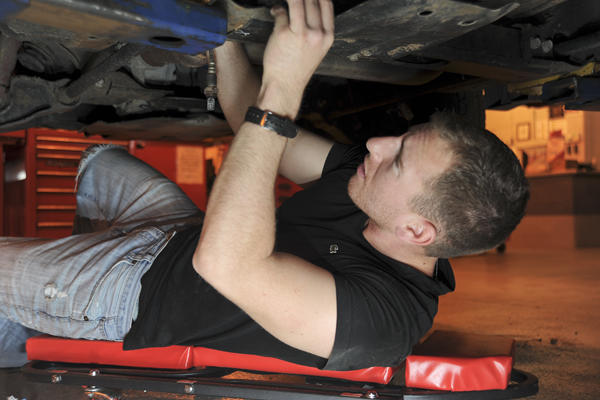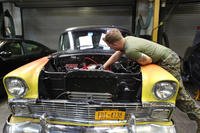Checking your brakes to see whether they're in good condition isn't as scary as it sounds; in fact, it's quite simple — with two qualifications: Don't fiddle with anything unless I tell you to, and be sure to disassemble the stuff that covers your brakes in the proper manner so that you don't have troublereassembling it.
Keep the following in mind for any major work your brakes may need:
- Don't attempt to replace brake shoes or discs, linings, or wheel cylinders yourself unless you do so under the eye of an auto shop instructor. If you choose to go this route with proper supervision, the money you save more than pays for your tuition! The job is neither difficult nor complicated. It just needs supervision.
- If you'd rather have the work done for you, find a reliable brake specialist rather than taking your vehicle to the corner garage. If you have an exotic system, go to your dealership. If not, get an estimate from the dealership, and then have the mechanic at your local service station recommend a brake specialist or try the yellow pages or the Internet to locate brake shops in your area. Call a couple of places and ask for estimates on rebuilding your brakes. Eliminate the cheapest place as well as the most expensive!
Things to Do and Not to Do When Working on Brakes
Caution: Here are a couple of "nevers" to remember when working on your brakes. Doing any of these things can cause serious damage and huge headaches:
- Never step on your brake pedal when you have the brake drum off your brakes. The pistons can fly out of the ends of the wheel cylinders because the drum won't stop the brake shoes from moving outward.
- Never use anything but the correct brake fluid in your brakes.
- Never get oil anywhere near your brake system. Oil rots rubber and will destroy the cups in the master cylinder reservoir and the dust boots on your wheel cylinders. If it gets on your brake linings, they won't grab the brake drum.
- Never get brake fluid on a painted surface. Brake fluid will destroy the paint.
- Never remove wheel cylinders or brake shoes, or tamper with the selfadjusting device on your brakes, without supervision.
Now, here's what you can do: Most modern vehicles either have disc brakes on the front wheels and drum brakes on the rear wheels or disc brakes all around. Your owner's manual should tell you what the configuration is onyour vehicle.
Tip: When you check your brakes, check one of your front brakes first because the linings wear faster on the front brakes than on the rear ones. If the first set of brakes you look at seems to be in good condition, and if your vehicle has been braking properly, there's probably no need to check the other three. Just remember to check the other front wheel first the next time. If your brakes haven't been behaving properly, check each set of brakes until youfind the culprit.
Before you start to check your brakes, be sure that you have the necessary tools and products on hand. You don't want any last-minute surprises when your vehicle is up on jack stands with at leastone wheel off!
A front-wheel drive vehicle doesn't conform exactly to the following description. You can still check the brakes, but you can't repack the wheel bearings. Brakes in vehicles with ABS and other brake-related safety systems are linked to sophisticated electronic control systems and have wheel speed sensors mounted on the axles near the brakes, so if your brakes don't feelright, see the brake specialist at your dealership or a reliable brake shop.
From Auto Repair for Dummies, copyright © 2009 by Wiley Publishing, Inc., Indianapolis, Indiana. Used by arrangement with John Wiley & Sons, Inc.










